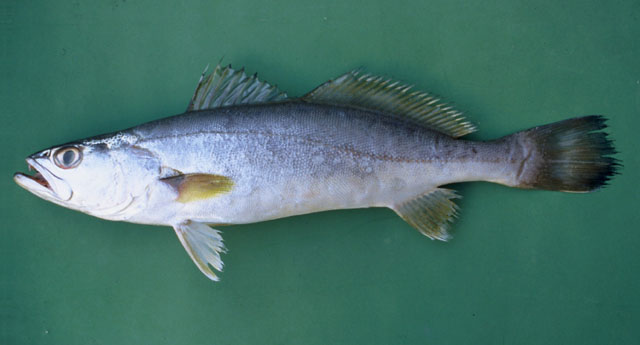| Sciaenidae (Drums or croakers) |
| 92 cm TL (male/unsexed); 78 cm TL (female); max.weight: 3,000.0 g |
|
demersal; brackish; marine; depth range - 30 m |
| Western Atlantic: Venezuela to Santos, Brazil. |
|
Dorsal spines (total): 11-11; Dorsal soft rays (total): 22-25; Anal spines: 2-2; Anal soft rays: 8-10. Silvery greenish to greyish on back, whitish on belly. Tip of dorsal fin darkish. Upper rays of pectoral fins, anterior part of anal fin and caudal fin yellowish. Mouth large, oblique, lower jaw projecting. Upper jaw with a pair of large canine-like teeth at tip. Gradually increasing in size posteriorly. Chin without barbel or pore, snout with 2 marginal pores. Gas bladder with a pair of long and straight horn-like appendages. Scales very small, all cycloid (smooth) with 140 or more transverse scales above lateral line. Soft portion of dorsal fin covered with scales beyond basal half of fin (Ref 51721). |
| Usually found over mud and sandy bottoms in river estuaries and in marine areas from the coastline to about 30 m depth. Marketed mostly fresh. |
|
Least Concern (LC); Date assessed: 14 October 2019 Ref. (130435)
|
| harmless |
Source and more info: www.fishbase.org. For personal, classroom, and other internal use only. Not for publication.
